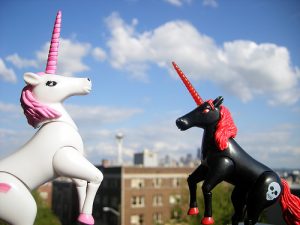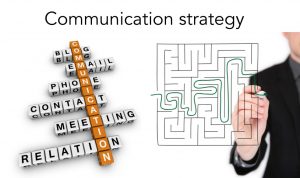 This post is a paper I wrote for my Public Relations Theory course at Syracuse University in the fall of 2012. The reference citations can be found in The SAGE Handbook of Public Relations edited by Robert L. Heath.
This post is a paper I wrote for my Public Relations Theory course at Syracuse University in the fall of 2012. The reference citations can be found in The SAGE Handbook of Public Relations edited by Robert L. Heath.
Reputation Management is an area of Public Relations that is seeing an increase in interest as organizations come to realize that their reputations affect the bottom line (Coombs, 2010; Watson, 2010). As society becomes more aware of the risks it faces daily (McComas, 2010), reputational assets to defend against crises depleting an organization’s reserve of its good name become more valuable (Coombs, 2010; Watson, 2010). Reputation is no longer taken at face value, but the actions, messages, behaviors, opinions and beliefs of an organization as a whole are taken into account when viewing an entity.
What is Reputation Management?
Reputation Management is defined in two distinct methods. In one camp, there are those who believe “reputation is uncontrollable” (F.E. Campbell, R.A. Herman, & D. Noble, 2006, in Gilpin & Murphy, 2010, pg. 79). Complexity Theory explains reputation in a manner to “highlight the instability” and show how “vulnerable to environmental factors that often defy organizational control” (Gilpin, et al., 2010, pg. 79) the concept is perceived to be. The definitions of reputation provided by Gotsi and Wilson as the dynamic construct of “a stockholder’s overall evaluation over time” (M. Gotsi & A.M. Wilson, 2001, in Gilpin, et al., 2010, pg. 79) and Deephouse as a “collective concept connecting the firm, media workers, stakeholders, sources of news about firms, and the readers of news” that “develops over time through a complex social process” (D.L. Deephouse, 2000, in Gilpin, et al., 2010, pg. 79) are examples of those who believe reputation is completely in the eyes of the beholder.
In the other camp, there are those who believe “reputation does not occur by chance” (Watson, 2010, pg. 339). Organizational Management approaches include affective and cognitive elements, which “separate the perception of the stakeholder from their behavior” (Watson, 2010, pg. 340) making the concept more controlled. The definitions of reputation provided by Argenti and Druckenmiller as a “collective representation of multiple constituencies’ image of a company built up over time and based on a company’s identity programs, its performance and how constituencies have perceived its behavior” (P.A. Argenti and B. Druckenmiller, 2004, in Watson, 2010, pg. 340) and Watson (2010) as the “sum of predictable behaviors, relationships, and two-way communication undertaken by an organization as judged affectively and cognitively by its stakeholders over a period of time” (pg. 340) are examples of those who believe reputation is the responsibility of the organization.
I agree with the controllable concept of reputation. It is up to each organization to develop, nurture and maintain relationships with stakeholders to share a common understanding of what the organization is about.
Tweeting Under Fire
 Recently, several brands have experienced threats to their reputation by rogue Tweets released from their company Twitter accounts. The offensive Tweets were meant for employee’s personal accounts, but were mistakenly posted to the brand account they work for instead.
Recently, several brands have experienced threats to their reputation by rogue Tweets released from their company Twitter accounts. The offensive Tweets were meant for employee’s personal accounts, but were mistakenly posted to the brand account they work for instead.
Chrysler, a major U.S. automaker, outsourced its social media programs to New Media Strategies, a social media agency. An employee of New Media Strategies mistakenly posted the following Tweet March 9, 2011, meant for his personal account to the Chrysler Twitter account: I find it ironic that Detroit is known as the #motorcity and yet no one here knows how to fucking drive.
During a U.S. presidential debate October 3, 2012, a member of the social media team for KitchenAid, a manufacturer of kitchen appliances and accessories, posted the following Tweet meant for his personal account to the KitchenAid Twitter account: Obamas gma even knew it was going 2 b bad! ‘She died 3 days b4 he became president’, #nbcpolitics. The Tweet was in response to President Barack Obama’s mention of his grandmother, who died just before he took office, during the debate.
Reputation Management Goes Into Action
Two management approaches to building reputation are symbolic and behavioral. In the symbolic approach “organizations use communication to generate positive impressions” (J.N. Kim, S. Bache, & I. J. Clelland, 2007, in Brønn, 2010, pg. 313), and in the behavioral approach “the organization aligns its actions or behavior with the messages being sent through the organization’s communications” (J.N. Kim, S. Bache, & I. J. Clelland, 2007, in Brønn, 2010, pg. 313). As Chrysler took the symbolic approach by issuing an apology via one Twitter post that was anonymous and provided no information about the incident, KitchenAid took the behavioral approach by issuing an apology via a series of Twitter posts that identified the leader of the KitchenAid social media team, Cynthia Soledad, took responsibility for the incident, and explained the situation.
 The Excellence Theory states that trust and relationships with publics determine reputation, and these are built more on the actions of the organization than the messages it distributes (L.A. Grunig, J.E. Grunig, & D.M. Dozier, 2002, in Brønn, 2010, pg. 310). Chrysler’s trust and relationships with its stakeholders at the time of the Twitter incident was just beginning to rebound from a tarnished reputation caused by several years of failed sales and government bailouts. The rebound was in part due to the brand’s “Imported from Detroit” campaign it began in January 2011. The firing of the employee responsible for the rogue Tweet and Chrysler’s termination of the contract with the social media agency following the incident were seen as “too corporate” to constituents since the recent campaign featured the well-known-expletive-using rapper Eminem. KitchenAid, on the other hand, has maintained a solid relationship with consumers for almost the past 100 years. The rapid and detailed reaction to the Twitter incident was the action expected from the brand’s consumers.
The Excellence Theory states that trust and relationships with publics determine reputation, and these are built more on the actions of the organization than the messages it distributes (L.A. Grunig, J.E. Grunig, & D.M. Dozier, 2002, in Brønn, 2010, pg. 310). Chrysler’s trust and relationships with its stakeholders at the time of the Twitter incident was just beginning to rebound from a tarnished reputation caused by several years of failed sales and government bailouts. The rebound was in part due to the brand’s “Imported from Detroit” campaign it began in January 2011. The firing of the employee responsible for the rogue Tweet and Chrysler’s termination of the contract with the social media agency following the incident were seen as “too corporate” to constituents since the recent campaign featured the well-known-expletive-using rapper Eminem. KitchenAid, on the other hand, has maintained a solid relationship with consumers for almost the past 100 years. The rapid and detailed reaction to the Twitter incident was the action expected from the brand’s consumers.
Research based on the Reputation Quotient has identified six principles associated with high reputation: 1) visibility, 2) distinctiveness, 3) authenticity, 4) transparency, 5) consistency, and 6) responsiveness (C.B.M. van Riel & C.J. Fombrum, 2007, in Brønn, pg. 313). Chrysler failed during its Twitter incident to exhibit these features by waiting to respond and even then with a basic apology that reflected responsibility onto another entity. In contrast, KitchenAid and Soledad displayed all these characteristics by immediately responding to queries with @mentions and continuing to do so throughout the evening of the rogue Tweet, actively approaching the risk to its reputation with forthcoming information about what had transpired and what would be done to fix the problem, accepting responsibility, and offering a sincere and personal apology.
Chrysler vs. KitchenAid
 In this skirmish of the Reputation Management battle, I plant the victory flag for KitchenAid and hand the white flag of defeat to Chrysler. Not only did KitchenAid use the behavioral management approach to build and maintain its reputation, but it also continued to build and maintain trust and positive relationships with its consumers during a reputational risk through a response that incorporated all the characteristics of a high reputation. KitchenAid had continually nurtured its reputation so that when the threat appeared, there was enough accumulation of reputational assets in reserve to balance out (Coombs, 2010; Watson, 2010). On the other hand, Chrysler used the symbolic management approach and failed to foster trust and positive relationships with its publics during a reputational risk through a response that lacked high-reputation characteristics and set its recovery efforts back. Due to its declining reputation during the economic downturn, Chrysler did not have enough reputational assets in reserve to avoid the damage the Twitter incident inflicted on its already-struggling reputation (Coombs, 2010; Watson, 2010).
In this skirmish of the Reputation Management battle, I plant the victory flag for KitchenAid and hand the white flag of defeat to Chrysler. Not only did KitchenAid use the behavioral management approach to build and maintain its reputation, but it also continued to build and maintain trust and positive relationships with its consumers during a reputational risk through a response that incorporated all the characteristics of a high reputation. KitchenAid had continually nurtured its reputation so that when the threat appeared, there was enough accumulation of reputational assets in reserve to balance out (Coombs, 2010; Watson, 2010). On the other hand, Chrysler used the symbolic management approach and failed to foster trust and positive relationships with its publics during a reputational risk through a response that lacked high-reputation characteristics and set its recovery efforts back. Due to its declining reputation during the economic downturn, Chrysler did not have enough reputational assets in reserve to avoid the damage the Twitter incident inflicted on its already-struggling reputation (Coombs, 2010; Watson, 2010).
 As Reputation Management continues to grow in PR, it is up to practitioners to work with their entire organizations to make sure the picture they are putting out to stakeholders is accurate, consistent and representative of the whole organization.
As Reputation Management continues to grow in PR, it is up to practitioners to work with their entire organizations to make sure the picture they are putting out to stakeholders is accurate, consistent and representative of the whole organization.
What other social media crises have you seen that used either of these approaches?
photo credit: zoomar via photopin cc
photo credit: artmonstergirl via photopin cc
photo credit: @cdharrison via photopin cc
photo credit: mikeypage10 via photopin cc
photo credit: thorinside via photopin cc



